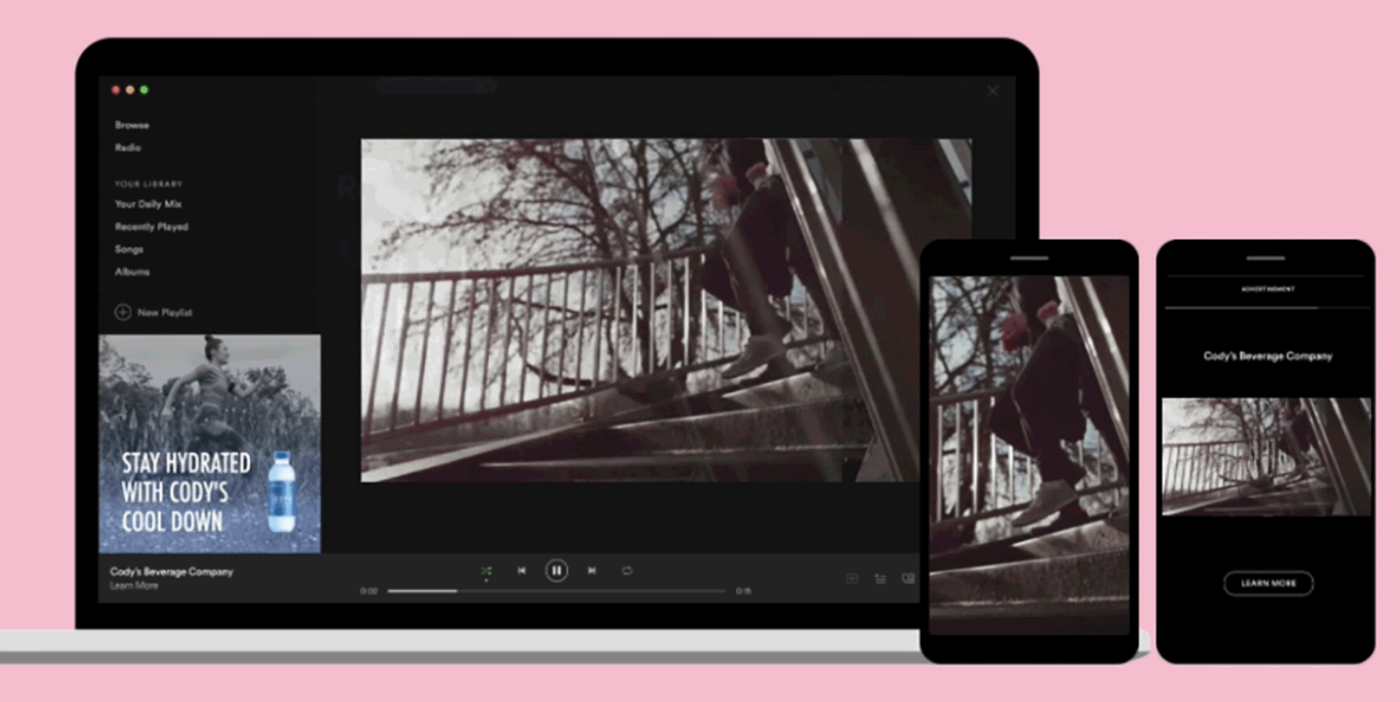
Today's social media age makes beauty influencer marketing a powerful marketing tool. Influencers capture aesthetic photos of beauty products, providing an ideal platform for consumers to make product-related decisions. This industry has seen a rapid growth and many new brands have entered the fray to make it more competitive. Today, marketers spend $8B a year on Influencer Marketing, and the number is only growing.
There are several top-tier influencers, including Kandee Johnson, who has 1.8 million subscribers on YouTube and a fan following of over a million on Instagram. Her tutorials for makeup are well-known, along with her charming personality. Nikita Nyen, another influencer, is the founder of Dragun Beauty. She's widely known as "The Mom of Draguns".
Lauren Curtis as well as Aimee song are other mega-influencers. They have more than 5.5 millions followers on Instagram. Both videos are focused on clothing and makeup. They also have a shop dedicated for their favorite styles.

Amra Olevic and Claire Marshall are also top YouTube beauty influencers. These three women are more popular than any other YouTubers for their lifestyle vlogs, makeup tutorials, and videos about beauty. They also collaborate with brands to build a relationship with their viewers.
According to Euromonitor research in 2018, personal and beauty care sales have increased by 52% in the United States over the past five-years. This trend will not stop, but brands have to adapt to the changing consumer trends if they want to stay relevant. Many brands work now with micro and macro-influencers.
Beauty brands need to include influencers in their marketing strategies. Brands can develop trust with their customers and audience by working with influential people. They can provide recommendations for new products, as well as demonstrate the benefits of their products through videos.
Beauty influencers are a valuable resource for consumers who are looking for a trusted guide to cosmetics and skincare. Influencers can help build a lasting relationship with consumers, which ultimately results in purchasing.

Beauty influencers can offer a brand a great ROI. TapInfluence's study found that influencer marketing campaigns produce eleven times as much return than banner advertising. A recent A&E study revealed that beauty-related campaigns resulted in a 400% increase on foot traffic. The study also showed that nearly two-thirds (33%) of US internet users who bought a product after seeing posts from influencers were younger than 34.
Nikita Nayen, with a net worth exceeding $4000, is one of the most influential YouTubers. Amanda Steele, which has over 2,000,000 subscribers, is another. Most of the beauty influencers on YouTube have a large community of followers, but there are some smaller experts who have more credibility and a deeper, more sincere following.
Clean beauty influencers have made a name themselves by encouraging their followers to practice clean beauty and living consciously. LTK is also available at great discounts to clean beauty bloggers.
FAQ
What is affiliate marketing?
Affiliate marketing allows you to make money by referring people to other websites that sell products or services. The product owner pays you for each person who buys from you.
Referrals are the foundation of affiliate marketing. People don't need to do anything to purchase from you. All you need to do is refer them to the website.
There are many ways to make money, without having to do any selling. Selling is as easy as buying.
In minutes, you can also set up an affiliate account.
The more you refer people, the more you'll receive commission.
There are two types:
-
Affiliates who own their websites
-
Affiliates who work for companies that offer products and services.
What is an advertisement campaign?
Advertising campaigns are a series or advertisements that promote a product. This could also include the entire production of these ads.
The Latin word "to sell" gave rise to the term "ad". The first known use was by Marcus Terentius Varro (116-27 BC), who used it as a verb meaning "to make a sale."
Advertising campaigns are most often done by large agencies or businesses. Many media types can be used in these campaigns, including television, radio and print.
Advertising campaigns are typically long-lasting and have clear goals. Campaigns can be targeted at increasing awareness or sales, for example.
What is advertising?
Advertising is an art. Advertising is not about selling products. It's about creating emotional connections between people and brands.
Advertising is about telling stories and using images to communicate ideas.
It is important to communicate clearly and persuasively. You must tell a story that is relatable to your target market.
Advertising is therefore different from other forms such as presentations, writing, and public speaking.
Because when you create a successful ad campaign, you are creating a brand identity for yourself.
This is how memorable you can be. You will be remembered by others.
How do I choose my target audience?
Begin with you and your closest friends. You might be unsure where to begin. Ask yourself: "Whom am I trying to reach?"
Ask yourself the following questions: Who are my industry's most influential people? What problems do they have to deal with every day? What are their top talents? Where are they located online?
Take a look back at how you started your company. What was your motivation for starting? What problem did you solve for yourself, and how did you do it?
These answers will help identify your ideal clients. Learn more about them and why they choose to do business with you.
Look at your competitors' sites and social media pages for clues as to who they cater.
Once you identify your target customers, then you must decide which channels to use to reach these people. For example, if your company provides services to real estate agents, you might create an informational website targeting home buyers.
If you provide software to small businesses, you could develop a blog targeting those companies' owners.
If you sell clothing, you could create a Facebook page for teens. You could also set up a Twitter account if your restaurant is a business owner to help parents find kid-friendly restaurants.
The important thing is that you have many options for getting your message across.
What is an advertiser buyer?
An advertiser buys advertising space on TV, radio, print media, etc.
Advertisers pay only for the time their message is to appear.
They don't necessarily seek the best ad; they want to reach their target markets with the most effective ad.
Advertisers may have demographic information such as the age, gender, marital status, income level, occupation, hobbies, and interests of their customers.
The advertiser can use this data to determine which medium will work best for them. Direct mail might be more effective with older customers, for example.
Advertisers also look at the competition. If there are similar businesses nearby, they might choose to place their ads near those competitors.
In addition, advertisers consider the size of their budget and the amount of time they have to spend their money before it expires.
Why should you use social media to promote your business?
Social Media Marketing, or SMM, allows you access customers directly on social networks, such as Facebook, Twitter LinkedIn YouTube YouTube Google+. You can also target specific audiences within these networks by using keywords.
Because this advertising method costs less online than traditional methods, it's more cost-effective. You can also build strong relationships and trust with your clients, both current and prospective.
It's very easy to start using social networks to promote your business. All you require is a smartphone, computer or laptop and Internet access.
What is the best way to advertise in print?
Print advertising is a good medium to communicate effectively with consumers. Print advertising is used by many companies to promote their products and services. The main goal is to catch the attention and buy from the consumer.
Print ads are usually short (one page) and contain text, pictures, logos, and other graphics. Print ads can also contain sound, animation, videos, and hyperlinks.
These are the main types of print ads:
1. Brochures - Large format printed brochures are used to draw people in to stores. They are often filled with colorful images and catchy designs.
2. Catalogues: These are smaller versions or brochures. These are usually sent to customers who request information about specific items.
3. Flyers - These small pieces of paper are distributed at events like fairs and concerts. They are generally free but must be paid for if they are handed out at retail outlets.
4. Posters - These flyers can be larger than the ones you see on the flyer. These flyers can be displayed on buildings, fences and walls. They are usually created using computer software programs designed to catch passersby's attention.
5. Direct mail - This refers to letters or postcards mailed directly to potential customers. These are sent to customers periodically by businesses to remind them about their business.
6. Newspaper Ads – These are ads that appear in newspapers or magazines. They can be quite lengthy and often include text as well as images.
Statistics
- Nonetheless, advertising spending as a share of GDP was slightly lower – about 2.4 percent. (en.wikipedia.org)
- It's 100% reliant on your website traffic. (quicksprout.com)
- In 1919 it was 2.5 percent of gross domestic product (GDP) in the US, and it averaged 2.2 percent of GDP between then and at least 2007, though it may have declined dramatically since the Great Recession. (en.wikipedia.org)
- Advertising spending as a share of GDP was about 2.9 percent. (en.wikipedia.org)
External Links
How To
How do I advertise with Google?
AdWords can be used by businesses to advertise using keywords that they are interested in. Set up your account first. Select a campaign name and set the budget. Choose the ad type (text or image), and add keywords. Then you bid on those keywords. You only pay if someone clicks on your ads if they come from someone who searched for your targeted keywords. This way, you get paid even when people don't buy anything.
Google has many tools to help you ensure your ads work. They include Keyword Planner, Ads Preferences Manager, and Analytics. These enable you to determine what is most effective for your business.
Keyword planners help you choose the keywords that will be used in your campaigns. It also shows you how much competition there is for certain keywords, helping you decide whether or not to spend money bidding on them.
You can use Ads Preferences Manager to change settings like the maximum number of impressions per day and the minimum cost per click.
Analytics allows you monitor and compare the performance to your ads against other companies. You can view reports that show how your ads performed in comparison to other ads.